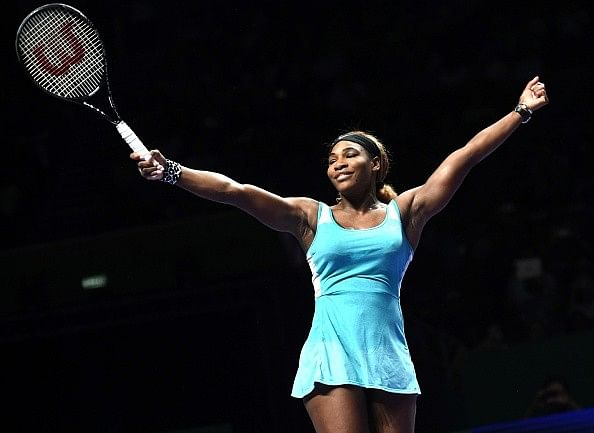
5 in the rankings and can surpass Federer into No. “It was a very good match because the only break point I had to save was in the last game,” said Thiem, who moved up to No. Thiem, who has a bracelet promoting fight against ocean pollution, signed the camera promoting the cause following his victory. But it was always sort of the person that could be the aggressor that did better.” Photo: TennisTV Summing up the match, he said, “we’ve played a few times now and it’s sort of been the same thing. There weren’t many times that I got to be on the offensive on the return games and, when I did, I wasn’t efficient about taking advantage of it.” “He was pushing me back, and then he was aggressive from the very first ball. “He wasn’t missing many first serves (making 76 per cent),” Raonic said. Thiem’s impressive serving neutralized the advantage Raonic usually has over opponents. He did the things smart, and he did the things better at the end.” “I thought I competed and I tried to figure things out as best as I could. “Definitely some things I would have liked to do better,” Raonic said afterward. The 28-year-old from Thornhill did a lot of impressive volleying on the day but still winning 38 of 62 net points was not quite good enough – and in the entire match he only managed that one break point in the final game. His winners to unforced errors ratio was 29/9 while Raonic was 58/35. In the end, it was a much cleaner performance by Thiem who reaches his first hard-court Masters 1000 final. Thiem made a remarkable 75 per cent of his service returns, an impressive stat because Raonic didn’t serve that poorly – 65 per cent of first serves made, 80 per cent of first-serve points won and 56 per cent of second serve points won. That it had been a competitive, compelling match had to be satisfying to tournament organizers knowing that an injured Rafael Nadal had given a walkover to Roger Federer in the other semi-final. Raonic would save one match point but Them, seeming to have regained his nerve, went big on a forehand approach on the final point and got a weak reply that he was able to volley into the open court to wrap up the two-hour and 31-minute contest. But he pushed a backhand long from a pose similar to the one in the picture below.

Thiem hit a poor, seemingly desperation inside/out forehand drop shot that Raonic got to in time to handle. The Austrian got tight and Raonic had a break point to level the set.

That was astounding consistency from Thiem and he finally broke through with the only service break of the match when Raonic added to his unforced forehand error count – missing one into the net to lose serve to 2-3 in the final set.īut there was still one last opportunity for him when Thiem tried to serve out the match at 5-4. By the third game of the final set – the 25-year-old Austrian had just one forehand unforced error to 20 for Raonic. Just how well Thiem was playing was clear in the stats numbers as the match progressed. Raonic got a fortunate net cord to take a 5-3 lead and then closed things out quickly.

In the second set, featuring only one break point, which Raonic erased with a 137 mph ace in the fourth game, things were again sorted out in a tiebreak. He then fell behind two mini-breaks at 1-5 but got one back before missing an overhead smash badly with a chance to close to 4-5. The first set had no break points either way and probably was decided when Raonic double-faulted on the very first point of the tiebreak.

In the first set, Dominic Thiem was nearly sublime, making zero unforced errors and losing just three points on his serve on his way to what would eventually be a hard-fought 7-6(3), 6-7(3) 6-4 victory.Īs superior as he was – overall winning 80 of 104 serve points to 79 of 110 for Raonic – the match came down to a few points. The signs were there from the very beginning that it was going to be a difficult afternoon for Milos Raonic in Saturday’s semi-final of the BNP Paribas Open in Indian Wells.


 0 kommentar(er)
0 kommentar(er)
